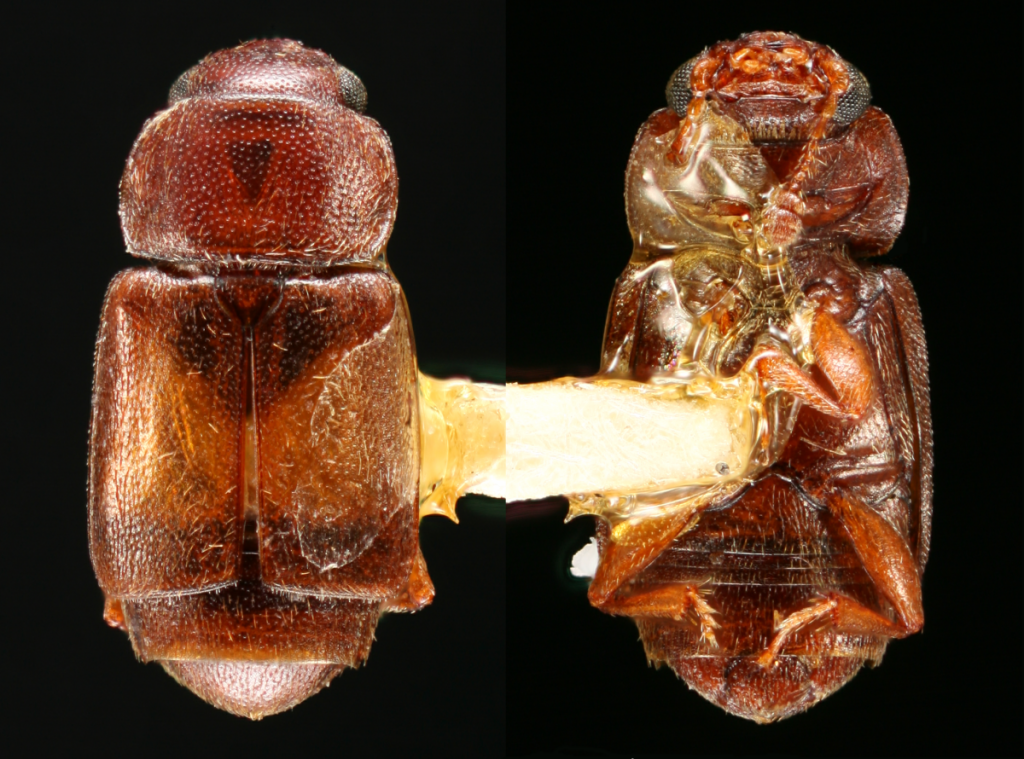Species Fact Sheet
Carpophilus discoideus (LeConte, 1858)
Diagnosis: Carpophilus discoideus specimens are distinguished from other eastern North American species by having the following combination of features: antennomere coloration unicolorous throughout antenna, pronotum posterior angles nearly forming a 90 degree angle, elytra bearing a pattern with darker coloration near scutellum and apex, and posterior rim of mesocoxal cavities smooth, not forming an axillary space.
Distribution: Carpophilus discoideus is found in North America in the west from British Columbia to California and east from Wyoming to Texas and in the east from Ontario to Massachusetts to Georgia and west from Ontario to Michigan to Illinois.
Biology: Very little is known about the biology of C. discoideus. It has been collected from ripening and partially dried figs, decaying fruit in orchards, and rotting Ferocactus wilsizeni (Fall, 1901; Simmons, Reed, and McGregor, 1931; Ferro, Nguyen, and Tishechkin, 2013).
References:
Fall HC (1901) – collection data
Ferro ML, Nguyen NH, Tishechkin A (2013) – collection data
Simmons P, Reed WD,bMcGregor EA (1931) – collection data
HOW TO CITE THIS WORK:
DiLorenzo, C.L., G.S. Powell, A.R. Cline, and J.V. McHugh (2021) Carpophiline-ID, a taxonomic web resource for the identification of Carpophilinae (Nitidulidae) of eastern North America. (vers. 01.19.2021) University of Georgia, retrieved from https://site.caes.uga.edu/carpophiline-id/
